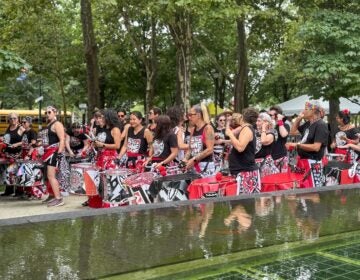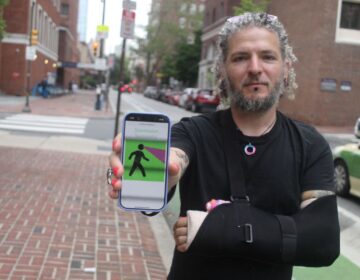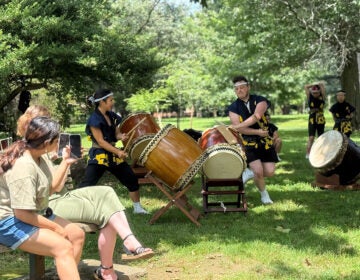Blue Bell Hill residents look to minimize impact of Walnut Lane bridge closure
With PennDOT pushback and a lack of political support, a community is beginning to accept that the bridge they’ve adopted as their own will be temporarily closed to traffic. As reported by NewsWorks, the historic Walnut Lane Bridge is slated to close for six months in 2014 to allow PennDOT to complete a $7 million overhaul.
The plan consists of removing and replacing the bridge’s half-mile roadway, improving lighting and signage, and repairing drainage systems and eroded slopes beneath the bridge.
Since the fall of 2012, the Blue Bell Hill Civic Association has been at the forefront of creating a public dialogue about the closure of the bridge, a principal mode of entry to the park-side neighborhood for residents and thousands of motorists per day. Some members spoke out for the need for a reassessment of PennDOT’s plans for closing the bridge, urging a consideration of alternatives such as a partial closure.
A series of private meetings involving local stakeholders were held, culminating in a public meeting held in December where PennDOT reaffirmed the need to close the bridge.
Two phases
As described in December by Michael Cuddy, project manager at TranSystems, the company directing the project for PennDOT, the design stage will continue through the end of 2013, with work on the bridge slated to begin in the spring of 2014. Work will occur in two phases: The first phase, which involves the bridge’s closure, will run for approximately six months.
Representatives from PennDOT said in December that incentives are in place to encourage timely completion by the contractor. The second phase will see the reopening of the bridge to traffic, with repairs to the bridge’s underside and sidewalks taking place.
The project is scheduled to conclude in 2015.
Civic groups meet
In January, BBHCA leaders met with representatives from Northwest Philadelphia civic groups and community organizations to continue discussions about work on the bridge and its impacts.
The meeting was hosted by BBHCA president, Ron Goldwyn, who reported on Tuesday that many in attendance wished to see the closure forestalled while others felt that position was not practical. According to Goldwyn, while most recognized the inconvenience of the closure, the consensus was to allow the BBHCA to lead the efforts.Asked for comment, Fourth District Councilman Curtis Jones, Jr. said he saw two choices, the total shut down for a shorter period or limited bridge access with an extended period of construction.
“Personally, I’d rather them shut it down and get it done,” he said.
State Representative Rosita Youngblood was not immediately available for comment.
“I don’t see a way to bend to PennDOT on their plan,” Goldwyn said, suggesting instead that the BBHCA’s position move to one of advocacy for mitigation of impacts and accountability.
BBHCA board member Ted Qualli concurred with Goldwyn’s assessment.
“We’ve taken it as far as we can,” said Qualli. “When you talk to an elected official, and they tell you that they’re not inclined to get behind this issue, we have to decide if this is our hill to die on.”
Not in agreement
However, this is not a unanimous position in the neighborhood, and at least one Blue Bell Hill resident wasn’t swayed by these arguments.
John Dixon, who has led efforts opposing the closure, said he left the January meeting with a different impression: namely, that other possibilities remain on the table. Insisting that a partial closure of the bridge was still viable, Dixon was concerned about the financial impacts of the closure on both residents and nearby merchants. In addition, he expressed skepticism about PennDOT’s six month closure plan, noting that unforeseen conditions – some of which could incur design modifications – could add months of delays.
“I’m hoping to get someone else to step up and help with it,” Dixon said.
Moving forward
While unanimity may be untenable, PennDOT spokesperson Charles Metzger said on Wednesday that the project is moving forward, and that work is being done to see how to minimize the time of the closure. Once the project is “let” – under contract – a preconstruction meeting will be held with city officials and interested parties to coordinate details regarding the project. Metzger said that there is no public component to this meeting.
With the closure seemingly inevitable, some residents are looking to mitigate the impact.
BBHCA board member Sidney Ozer suggested that the neighborhood can serve as an advocate for the consideration of “best alternatives,” including the rerouting of local bus routes, additional regional rail service, and the timing of traffic lights to ensure optimal traffic flow.
“That’s what we need to do,” said Ozer, “because it will determine the solutions.”
WHYY is your source for fact-based, in-depth journalism and information. As a nonprofit organization, we rely on financial support from readers like you. Please give today.




